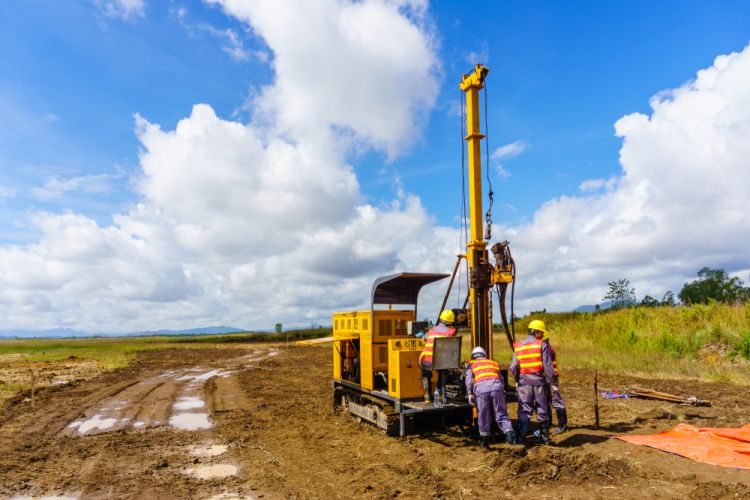The Basic Principles Of Geotechnical Engineering For Construction Projects
Some Ideas on Geotechnical Engineering For Construction Projects You Should Know
Table of ContentsWhat Does Geotechnical Engineering For Construction Projects Mean?Examine This Report about Geotechnical Engineering For Construction ProjectsLittle Known Questions About Geotechnical Engineering For Construction Projects.The Best Guide To Geotechnical Engineering For Construction ProjectsAn Unbiased View of Geotechnical Engineering For Construction ProjectsThings about Geotechnical Engineering For Construction Projects
These functions must be taken a look at by geotechnical designers to forecast their movements under numerous situations., making this evaluation necessary., in addition to just how they engage with buildings that have been put up on or within them, is one of the main descriptions for why geotechnical design is important.
Along with architectural planning and construction, geotechnical engineering is additionally crucial to the restoration and upkeep of pre-existing structures. Age-related destruction or added troubles could impact a framework's security and efficiency. Environmental management is achieved with geotechnical engineering. Expertise in air, water, and soil quality upkeep is used by geotechnical designers to decrease the unfavorable results of tasks.
Framework advancement, offshore engineering, tunnel building, and deep foundations. Risk-based style and multidisciplinary groups. These elements will certainly maintain the area evolving and ensure its continued relevance in the years ahead. To summarize, geotechnical engineering is a crucial technique that preserves the strength and integrity of civil infrastructure. Geotechnical designers add to making structure projects reliable throughout the globe by recognizing the practices of earth materials and applying appropriate planning techniques.
Geotechnical Engineering For Construction Projects for Beginners
The fundamental stability of any type of task is important. Geotechnical design plays an important function in ensuring that frameworks are improved strong ground, literally and figuratively. By taking a look at dirt, rock, and subsurface problems, geotechnical designers provide important understandings that assist in the style, building, and maintenance of structures and framework.

The Only Guide for Geotechnical Engineering For Construction Projects
Laboratory testing: Identifying the residential properties of dirt and rock. Several high-profile construction projects have successfully used geotechnical design to ensure their stability and security.

As a leader in geotechnical design, BECC Inc. is committed to delivering ingenious and effective services that fulfill the greatest criteria of quality and safety and security., a mechanical engineer and rock hound.
Little Known Questions About Geotechnical Engineering For Construction Projects.
Terzaghi likewise established the framework for theories of find this birthing capacity of foundations, and the theory for forecast of the price of settlement of clay layers as a result of consolidation. After that, Maurice Biot fully established the three-dimensional soil debt consolidation concept, expanding the one-dimensional version previously created by Terzaghi to a lot more basic theories and presenting the collection of fundamental equations of Poroelasticity.
Geotechnical engineers check out and determine the residential or commercial properties of subsurface conditions and moved here materials. They additionally make equivalent earthworks and keeping structures, passages, and framework foundations, and might supervise and evaluate sites, which may additionally include site tracking along with the danger evaluation and reduction of natural hazards - Geotechnical Engineering for Construction Projects. Geotechnical engineers and design geologists do geotechnical examinations to acquire details on the physical properties of dirt and rock hidden and adjacent to a website to design earthworks and structures for recommended frameworks and for the repair service of distress to earthworks and structures triggered by subsurface problems.
The Greatest Guide To Geotechnical Engineering For Construction Projects
Geologic mapping and analysis of geomorphology are generally finished in appointment with a rock hound or design geologist. Subsurface expedition typically includes in-situ screening (as an example, the typical infiltration test and cone penetration examination). The excavating of test pits and trenching (especially for locating faults and slide airplanes) might also be utilized to discover soil problems at depth. Still, they are in some cases utilized to enable a rock hound or engineer to be reduced right into the borehole for direct aesthetic and manual examination of the soil and rock stratigraphy. Various dirt samplers exist to satisfy the needs of various design projects. The conventional infiltration test, which makes use of a thick-walled split spoon sampler, is the most typical means to accumulate disrupted samples.

If the interface in between the mass and the base of a slope has a complicated geometry, slope stability evaluation is difficult and numerical service techniques are called for. Commonly, the user interface's specific geometry is unknown, and a streamlined interface geometry is presumed. Limited inclines require three-dimensional models to be examined, so most slopes are analyzed thinking that they are considerably large and can be represented by two-dimensional models.
The Only Guide to Geotechnical Engineering For Construction Projects
Developing the style based on a functioning theory of habits expected under the most possible conditions. Option of amounts to be observed as construction proceeds and calculating their anticipated values based on the functioning hypothesis under the most unfavorable problems.
Dimension of amounts and analysis of real conditions. Style alteration per actual conditions The observational technique is ideal for construction that has actually already begun when an unanticipated growth occurs or when a failing or crash looms or has actually already happened. It disagrees for projects whose style can not be changed during construction.